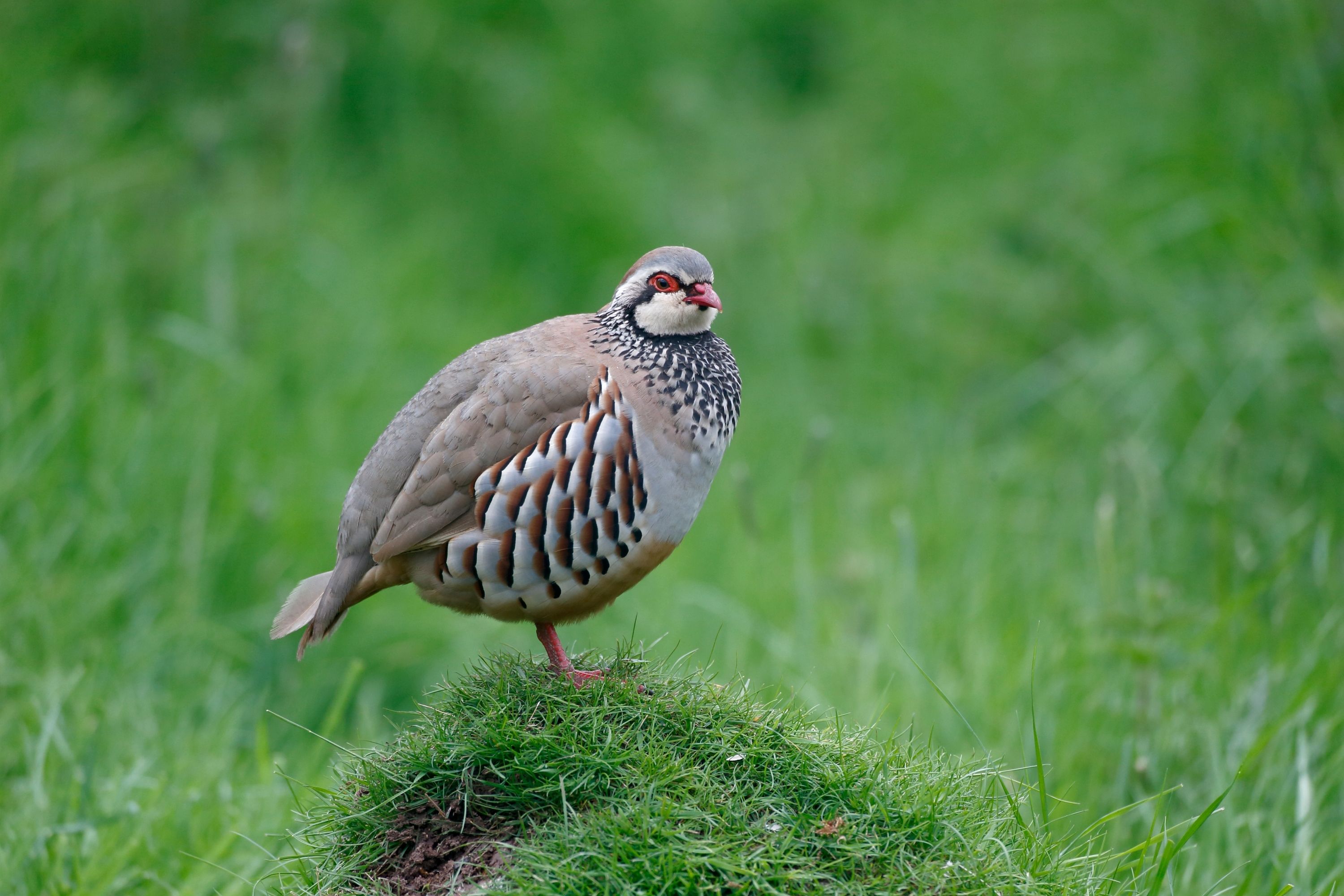Rock partridge
(Alectoris graeca)

Description
The rock partridge (Alectoris graeca) is a gamebird in the pheasant family, Phasianidae, of the order Galliformes (gallinaceous birds). It is native to southern Europe, and is closely related and very similar to its eastern equivalent, the chukar partridge, A. chukar. It is a resident breeder in dry, open and often hilly country. It nests in a scantily lined ground scrape laying 5-21 eggs. The rock partridge takes a wide variety of seeds and some insect food. The rock partridge is a rotund bird, with a light brown back, grey breast and buff belly. The face is white with a black gorget. It has rufous-streaked flanks and red legs. When disturbed, it prefers to run rather than fly, but if necessary it flies a short distance on rounded wings. It is very similar to the chukar partridge, but is greyer on the back and has a white, not yellowish foreneck. The sharply defined gorget distinguishes this species from red-legged partridge. The song is a noisy ga-ga-ga-ga-chakera- chakera- chakera. This species is declining in parts of its range due to habitat loss and over-hunting. While populations are usually stable, the status of the Sicilian population may be more precarious, and certainly deserves attention (Randi 2006). Alectoris is a genus of partridges in the family Phasianidae, closely related to Old World quail (Coturnix and relatives), snowcocks (Tetraogallus), partridge-francolins (Pternistis), bush quail (Perdicula), and sand and see-see partridges (Ammoperdix). Members of the genus are known collectively as rock partridges (a name that also refers to one species in particular, Alectoris graeca). The genus name is derived from the Ancient Greek: αλέκτωρ, romanized: alektoris, meaning "chicken" or "farmyard fowl". Their fossils date back to the early Pleistocene, with extant representatives in southern Europe, North Africa and Arabia, and across Asia in Pakistan to Tibet and western China. These are non-migratory birds of dry, open and often hilly country. They nest in a scantily lined ground scrape laying up to 20 eggs. They feed on a wide variety of seeds and vegetation. Ants are a very important source of nutrition for the birds as are pine nuts, juniper berries and lichens.
Taxonomic tree:







